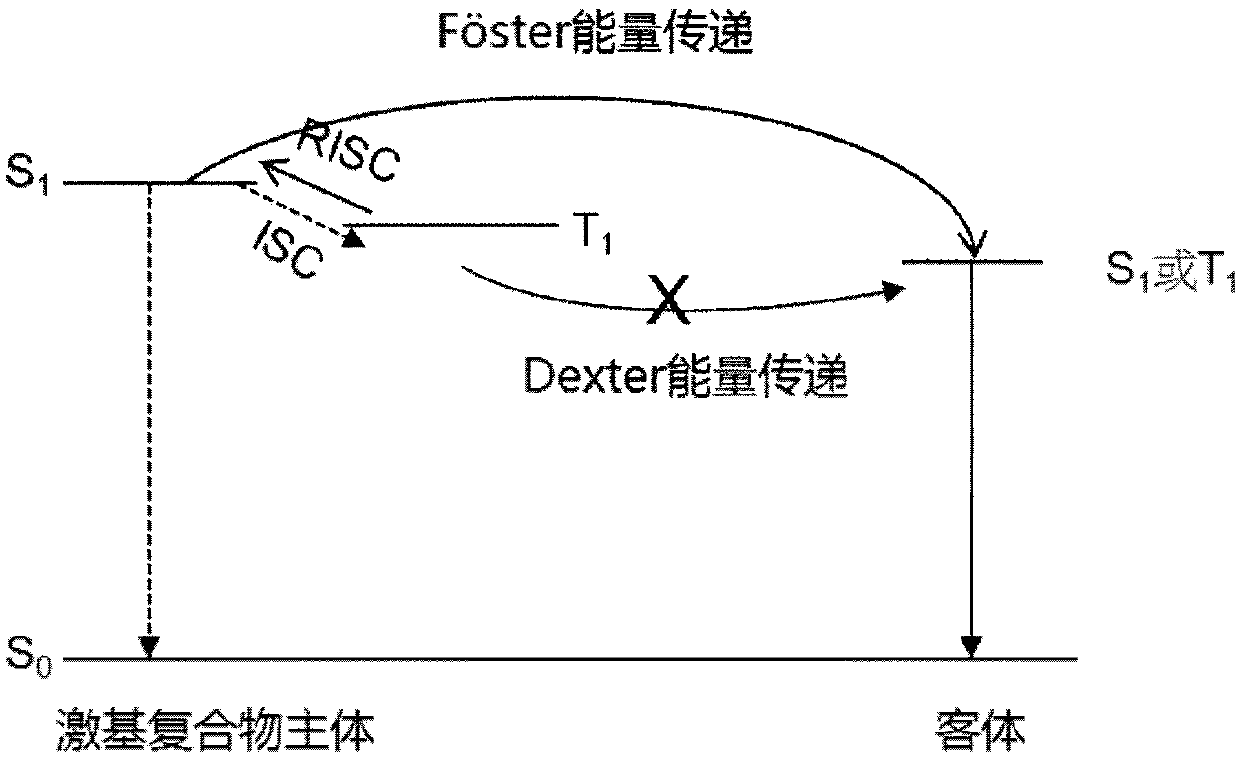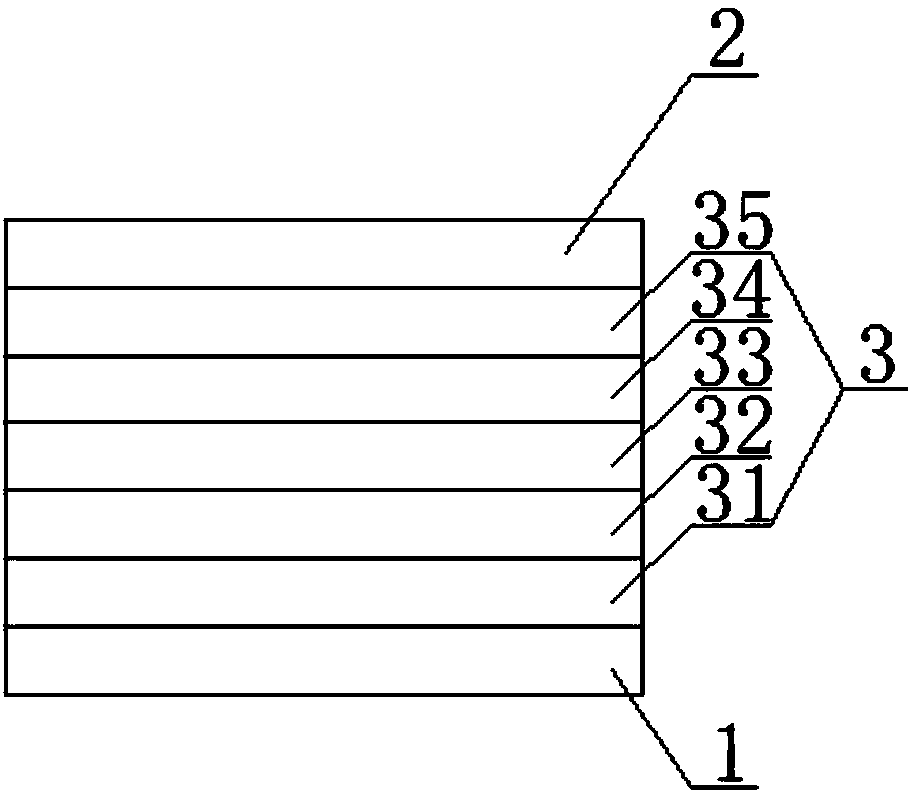Organic light-emitting diode
An electroluminescent device and electroluminescent technology, applied in organic semiconductor devices, electric solid state devices, organic chemistry, etc., can solve triplet-polaron annihilation, low crossover rate between inverse systems, large energy level difference, etc. problems, to achieve the effect of controlling the difficulty of the evaporation process, improving the life of the device, and reducing the degree of overlap
- Summary
- Abstract
- Description
- Claims
- Application Information
AI Technical Summary
Problems solved by technology
Method used
Image
Examples
Embodiment 1
[0056] This embodiment provides an organic electroluminescent device, such as figure 2 As shown, there are a first electrode 1 , a second electrode 2 and an organic functional layer 3 between the first electrode 1 and the second electrode 2 . The first electrode 1 is an anode, the second electrode 2 is a cathode, and the organic functional layer 3 includes a stacked hole injection layer 31, a hole transport layer 32, a light emitting layer 33, an electron transport layer 34 and an electron injection layer 35, that is, the The structure of the organic electroluminescent device is: anode / hole injection layer / hole transport layer / light emitting layer / electron transport layer / electron injection layer / cathode.
[0057] The light emitting layer 33 is composed of a host material and a guest material doped in the host material. The guest material can be a fluorescent material or a phosphorescent material. Wherein, the exciplex is used as the host material, and the mass ratio of the...
Embodiment 2
[0073] In embodiment 2, the OLED device can be designed as the following organic electroluminescent device, the structure of the organic electroluminescent device includes an anode, a hole injection layer, a hole transport layer, an organic light emitting layer, an electron transport layer, an electron injection layer and the cathode. In this embodiment, a compound composed of triphenylamine and carbazolyl is selected as the donor molecule, and the selected substituent group X is Has the structure shown in formula (1-1):
[0074]
[0075] A compound composed of carbazolyl and triazinyl is selected as the acceptor molecule, which has the structure of formula (A), and the difference from the molecule (2-34) used in Example 1 is that there is no large steric hindrance substituting group tert-butyl, Formula (A) molecular structure:
[0076]
[0077] The donor molecule shown in formula (1-1) and the acceptor molecule shown in formula (A) constitute an exciplex, and in the ...
Embodiment 3
[0089] In embodiment 3, the OLED device can be designed as the following organic electroluminescent device, the structure of the organic electroluminescent device includes an anode, a hole injection layer, a hole transport layer, an organic light emitting layer, an electron transport layer, an electron injection layer and the cathode. In the present embodiment, the compound composed of triphenylamine group and carbazole group is selected as the donor molecule, and the selected steric hindering group X is Has the structure shown in formula (1-10):
[0090]
[0091] A compound composed of pyridyl and triazine is selected as the acceptor molecule, and the selected hindering group X is Has the formula (2-19) structure:
[0092]
[0093] In embodiment 3, the first electrode in the organic electroluminescent device, that is, the anode, is made of ITO material; the hole injection layer is made of 2,3,6,7,10,11-hexacyano-1,4,5,8 , 9,12-hexaazatriphenylene (abbreviation: HAT...
PUM
 Login to View More
Login to View More Abstract
Description
Claims
Application Information
 Login to View More
Login to View More - R&D
- Intellectual Property
- Life Sciences
- Materials
- Tech Scout
- Unparalleled Data Quality
- Higher Quality Content
- 60% Fewer Hallucinations
Browse by: Latest US Patents, China's latest patents, Technical Efficacy Thesaurus, Application Domain, Technology Topic, Popular Technical Reports.
© 2025 PatSnap. All rights reserved.Legal|Privacy policy|Modern Slavery Act Transparency Statement|Sitemap|About US| Contact US: help@patsnap.com



